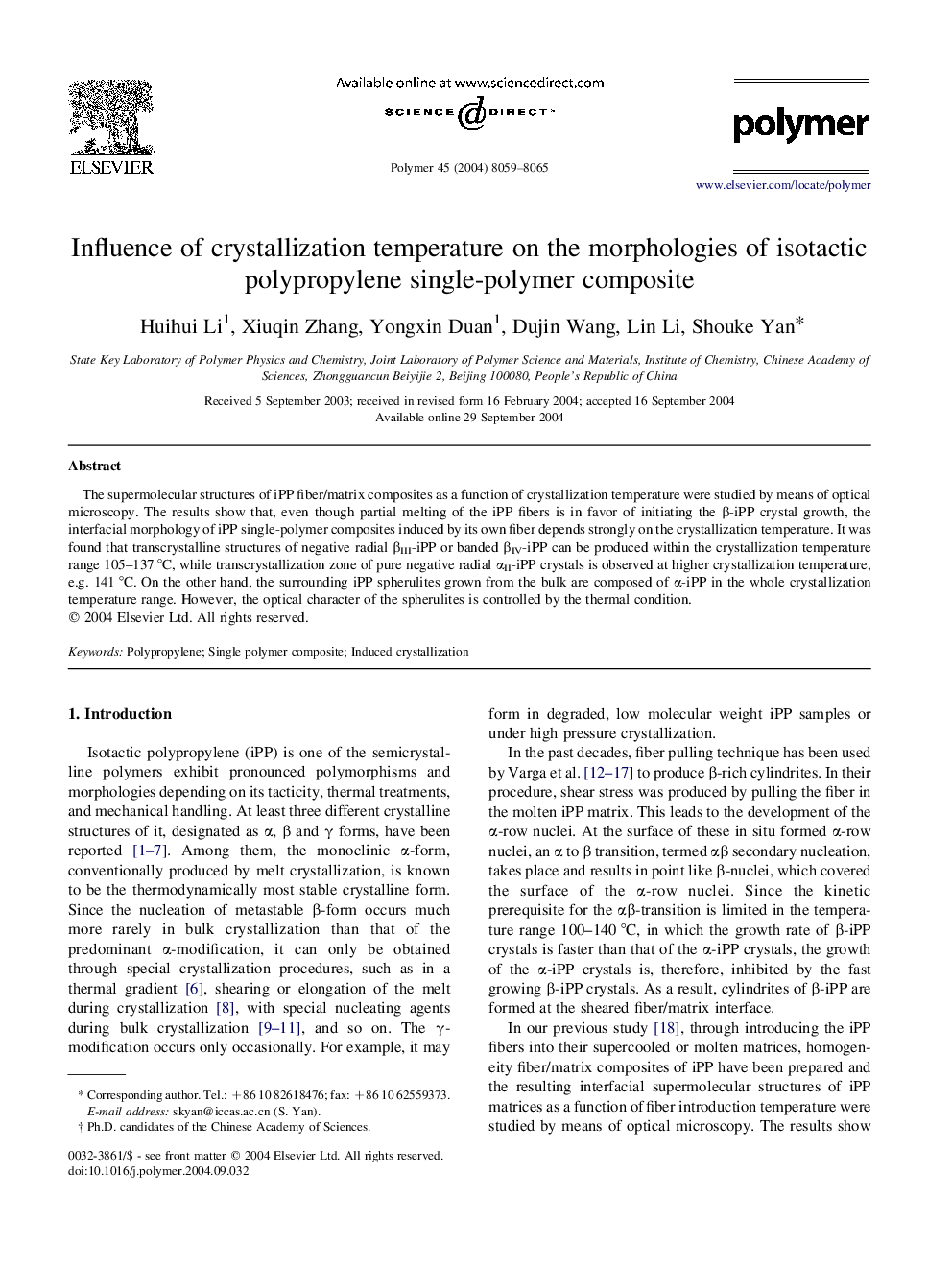| Article ID | Journal | Published Year | Pages | File Type |
|---|---|---|---|---|
| 5188929 | Polymer | 2017 | 7 Pages |
Abstract
The supermolecular structures of iPP fiber/matrix composites as a function of crystallization temperature were studied by means of optical microscopy. The results show that, even though partial melting of the iPP fibers is in favor of initiating the β-iPP crystal growth, the interfacial morphology of iPP single-polymer composites induced by its own fiber depends strongly on the crystallization temperature. It was found that transcrystalline structures of negative radial βIII-iPP or banded βIV-iPP can be produced within the crystallization temperature range 105-137 °C, while transcrystallization zone of pure negative radial αII-iPP crystals is observed at higher crystallization temperature, e.g. 141 °C. On the other hand, the surrounding iPP spherulites grown from the bulk are composed of α-iPP in the whole crystallization temperature range. However, the optical character of the spherulites is controlled by the thermal condition.
Keywords
Related Topics
Physical Sciences and Engineering
Chemistry
Organic Chemistry
Authors
Huihui Li, Xiuqin Zhang, Yongxin Duan, Dujin Wang, Lin Li, Shouke Yan,
